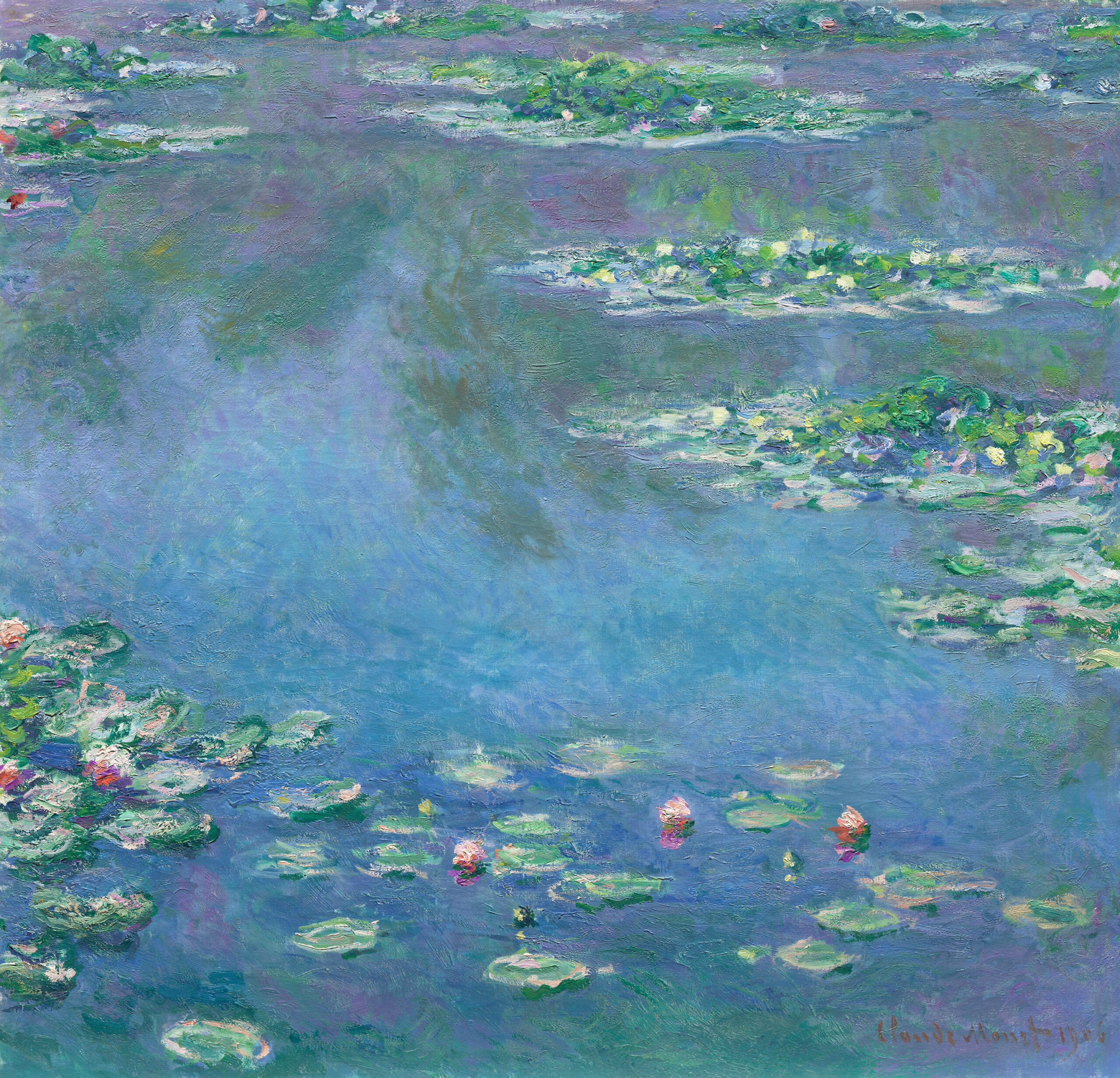Claude Monet: The father of impressionism
Claude Monet is widely regarded as the father of the Impressionist movement. His innovative approach to capturing light, color, and natural scenes revolutionized the art world and changed the way we view the beauty of the everyday. Monet’s ability to capture fleeting moments—whether in a garden, on the water, or in a cityscape—made him one of the most beloved and influential artists in history. His works remain timeless, continuously inspiring new generations of artists and art lovers alike.
“I am following Nature without being able to grasp her, I perhaps owe to it the fact that I have been able to paint at all.”
— Claude Monet
1. Water Lilies (Nymphéas) (1896–1926)
Monet’s Water Lilies series is perhaps his most iconic and enduring achievement. Painted in his garden at Giverny, the Water Lilies are a collection of over 250 works that explore the beauty of the flowers, their reflection on the water, and the changing light throughout the day. Monet’s brushstrokes and use of color create a dreamlike, almost abstract quality to the paintings, inviting viewers to lose themselves in the tranquil beauty of nature. The series emphasizes Monet’s deep connection with nature and his desire to capture its ever-changing forms.

2. Impression, Sunrise (1872)
Impression, Sunrise is the painting that gave the Impressionist movement its name. The piece depicts the port of Le Havre at sunrise, with a misty harbor bathed in soft, glowing light. Monet’s loose brushstrokes and use of color capture the fleeting moment of dawn in a way that was groundbreaking at the time. The work focuses not on fine details but on the effects of light and atmosphere, marking a departure from traditional, more precise forms of painting. The title itself reflects Monet’s focus on impressions—the fleeting moments in time that evoke emotion rather than exact representation.

3. Rounded Flower Bed (1881)
Rounded Flower Bed showcases Monet’s talent for capturing the beauty of nature in full bloom. The painting depicts a well-arranged flower bed in his garden at Argenteuil, with flowers in full color and vibrant detail. The interplay of light and color in the scene reveals Monet’s mastery of capturing the effects of sunlight, as it filters through the leaves and flowers. The composition, with its rounded shape and vivid color palette, evokes a sense of harmony and serenity, characteristic of Monet’s garden scenes.

4. The Artist’s Garden at Vétheuil (1881)
In The Artist’s Garden at Vétheuil, Monet paints a view of his garden in the village of Vétheuil, where he lived for a time. The painting features lush greenery, flowers, and a path leading through the garden, showcasing Monet’s deep affection for his surroundings. The bright, vivid colors and flowing brushstrokes reflect Monet’s desire to express the beauty of nature in its most vibrant form. The scene captures a moment of peace, inviting the viewer to step into Monet’s world, where nature and art are inextricably linked.

5. Banks of the Seine, Winter (1894)
In Banks of the Seine, Winter, Monet captures the quiet beauty of the Seine River in winter, with snow covering the banks and soft light illuminating the scene. The painting reflects Monet’s ability to capture the subtle nuances of light and atmosphere, as the pale winter sky and reflections on the water blend together in harmonious color. This work is a part of Monet’s exploration of seasonal changes and their impact on the landscape. The serene, still quality of the scene conveys a sense of calm, making it a perfect example of Monet’s ability to evoke emotion through landscape.

Monet’s legacy lies in his ability to see the world with fresh eyes, capturing the beauty in everyday moments with vibrant color and dynamic brushwork. His works celebrate the beauty of nature and the transient nature of light, making him one of the most revered artists in history.
Read more:
- Claude Monet: The father of impressionism
- Gustav Klimt – My favorite artist
- Impressionism: Capturing Moments of Light and Life
- The Rennaisance: A rebirth of Art and Innovation
- Why Art and Culture Matter to Me




